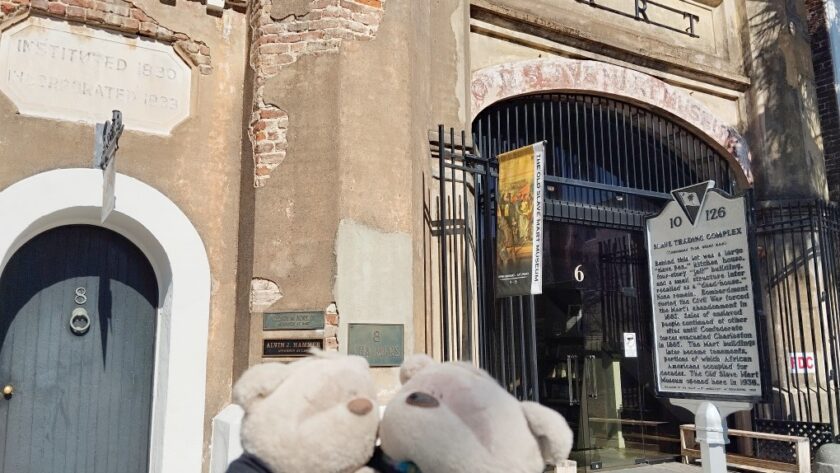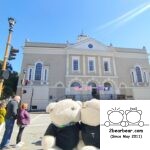Old Slave Mart Museum was the next venue we visited after the Old Exchange and Provost Dungeon. After learning about the history of Charles Towne and the crops it produced, visiting Old Slave Mart Museum was a great continuation of this story – of how the slaves built up Charleston to become one of the richest city in the South…
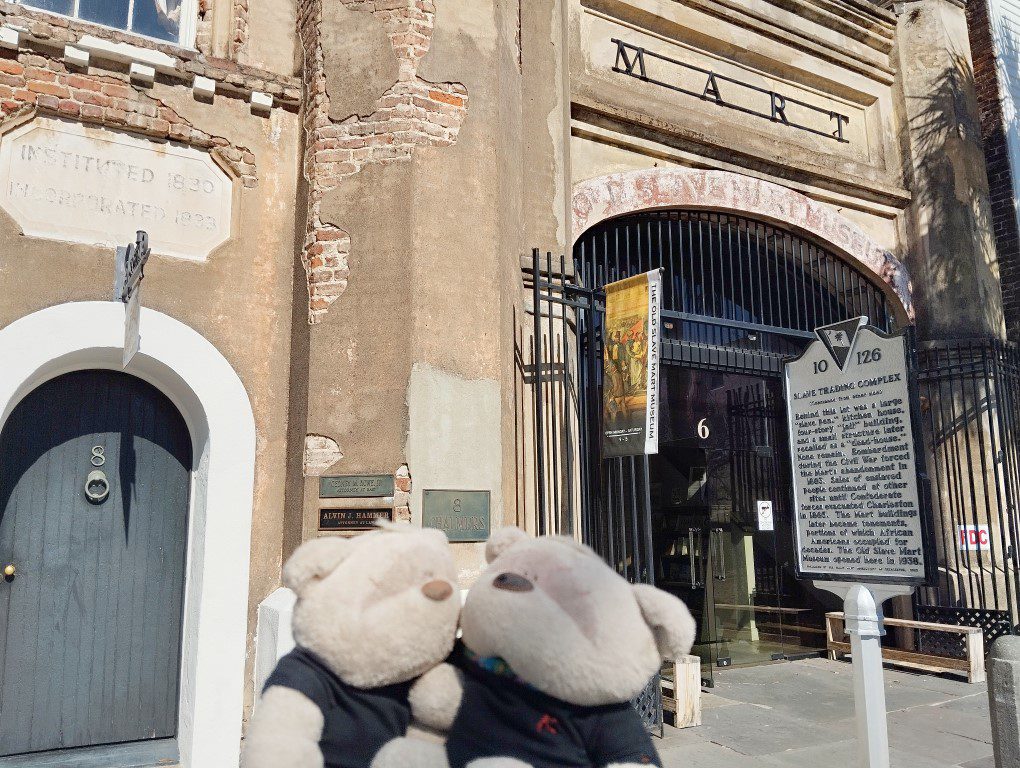
About Old Slave Mart Museum Charleston
The Old Slave Mart was actually owned by Thomas Ryan who ran the Old Slave Mart as Ryan’s Mart, a venue where slave auctions took place from 1859 till slavery was abolished in 1865. An estimated 40% of all slaves entered the US through Charleston, many of those auctions took place at Ryan’s Mart.
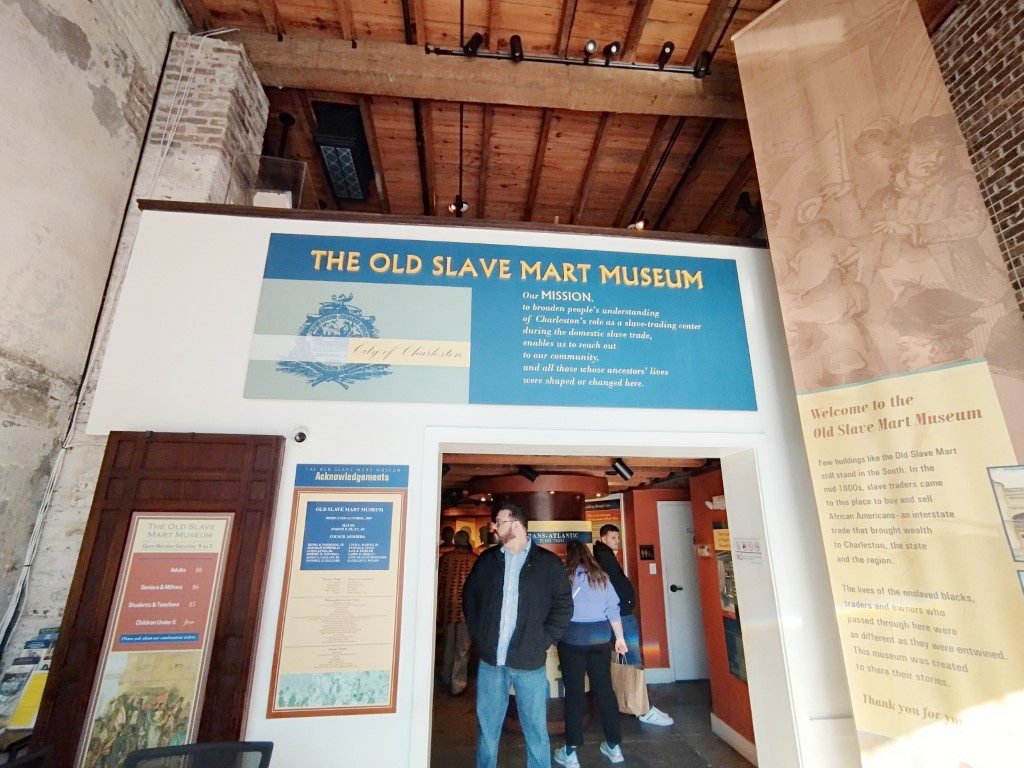
Here, we learnt that there were 3 bounds of the slavery route…
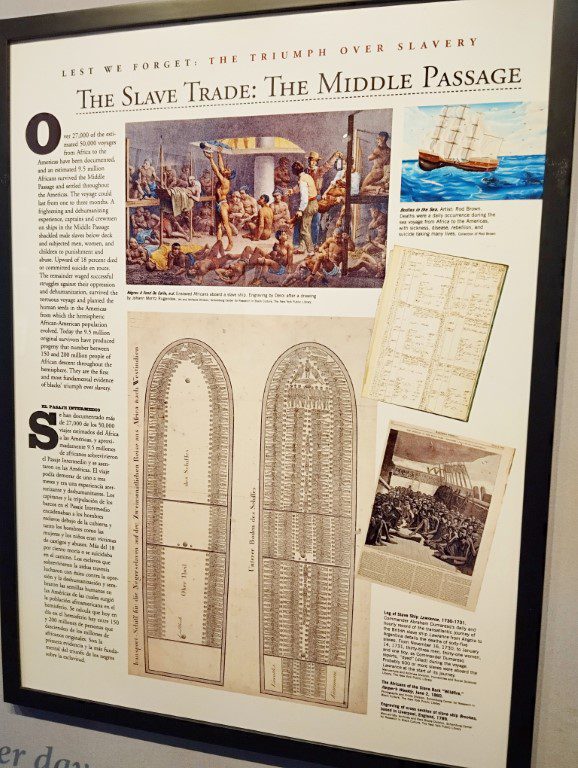
The 1st bound was actually from East to West Africa. Once in West Africa, the 2nd bound or the Middle Passage took place where the slaves would be transported from West Africa to the Americas, including South America. An estimated 50,000 of these passages took place, bringing 9.5 million slaves to the Americas. The 3rd bound would take the slaves from the Americas to Europe.
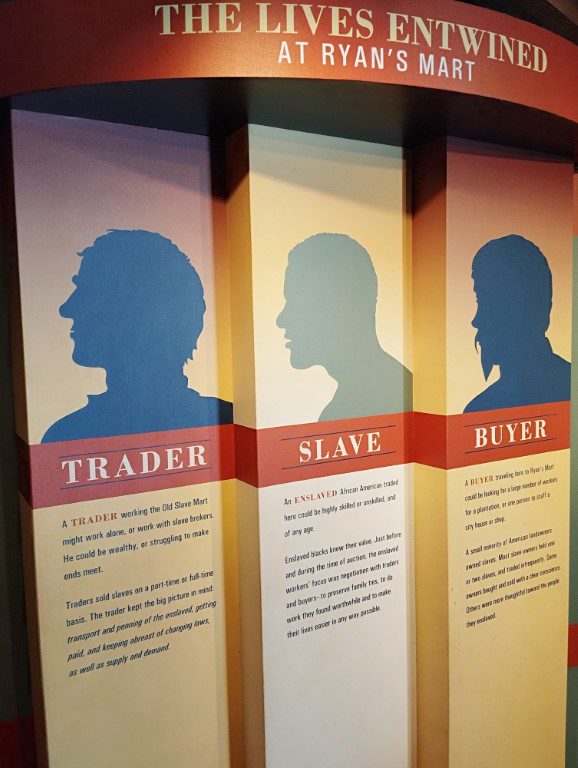
At Ryan’s Mart, there were essentially 3 groups of people. The Traders, who would bring in the slaves and be kept abreast of the latest slavery laws. The Slaves themselves, who will be either unskilled workers or even skilled labour – artisans or knowledgeable in growing rice in the Western regions of Africa. Lastly, there would be buyers who will be looking for slaves to work on their plantations or just additional help in their homes.
Information Found at the Old Slave Mart Museum Charleston
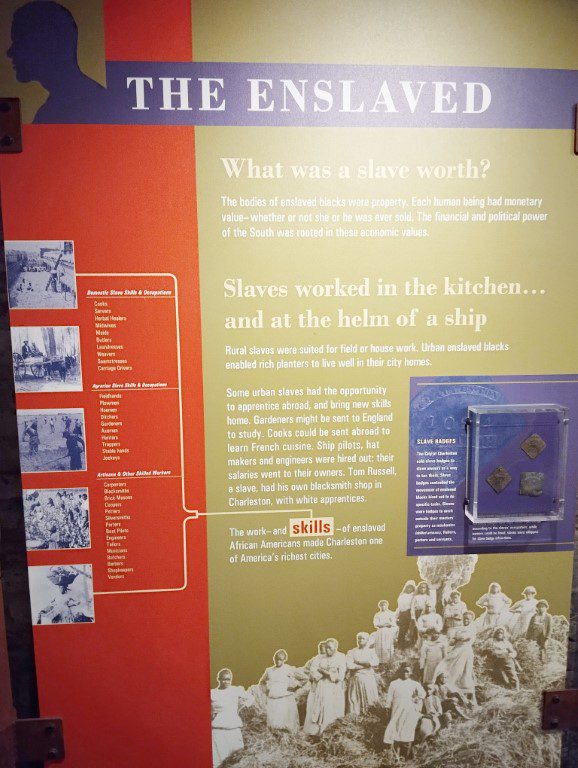
As mentioned earlier, there are different skills required to build up Charleston, not only slaves to work on plantations. There are actually many skilled slaves that were brought in to be blacksmiths, brick masons, engineers, musicians, barbers. There was even a slave, Tom Russel, who had his own blacksmith shop with white apprentices. The sad part was that the earnings would all go largely to the slave owners, which made them even richer.
In fact, slaves had an approximate value and this chart shows it…
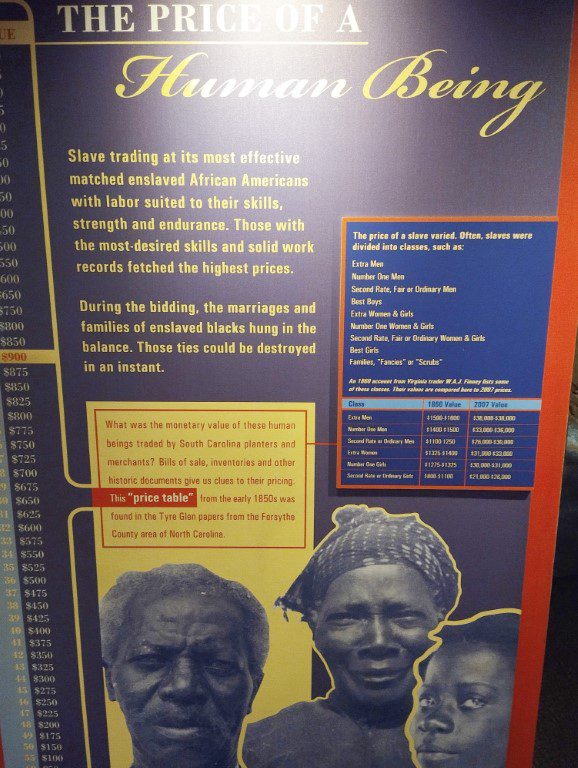
Depending on their age and physical condition (as well as skills), slaves could be worth in the region of $20,000 to $40,000 in today’s value. Hence, the number of slaves owned is also a display of the wealth of the owners in those days.
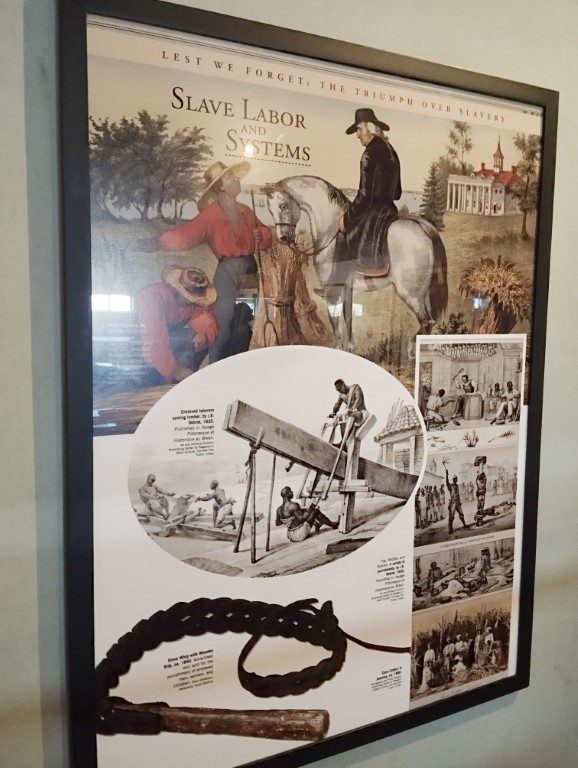
To keep their “wealth”, slave owners had a system of fear and punishment that kept the slaves in check. There would be whips used to punish slaves that tried to escape. This would also cause fear to others as these punishments would be held publicly. Slave owners would also use “emotional fears” such as threatening to sell their wives or children if they did not keep in line. Inside the museum, there are artefacts such as the whips and even yokes used to hold the slaves in place, preventing them from running – if they did, they would injure themselves in the process.
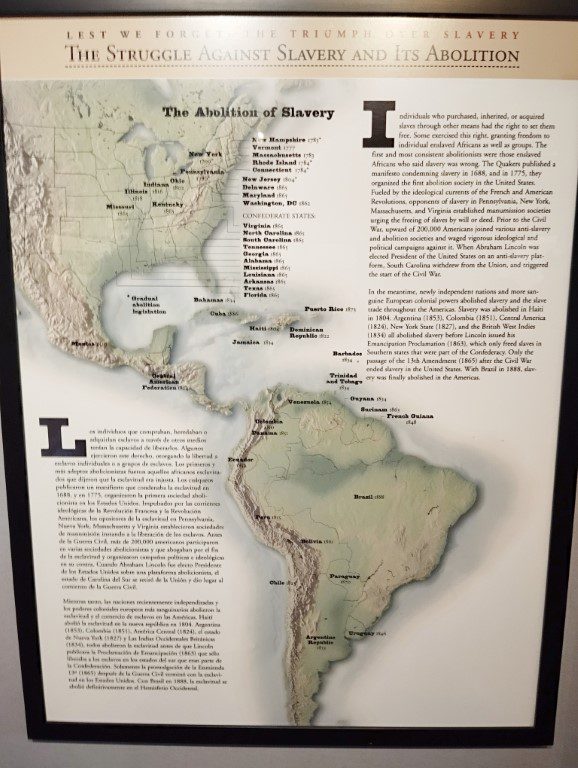
Eventually, slavery was abolished in 1865 in US and in the rest of the Americas, by 1888. However, the story does not end there. We learnt more about what happened after the emancipation at the plantations – particularly McLeods.
If you enjoyed our content, “Like” us on Facebook Today!
Though it was a short visit to the Old Slave Mart Museum in Charleston, we definitely learnt alot. It was surreal to hear the interview with the slave and learnt how they eventually overcome through support within the community as well as the faith in Jesus that brought them through. Definitely a worthwhile and informative place to drop by and learn about the history of slaves in Charleston.
